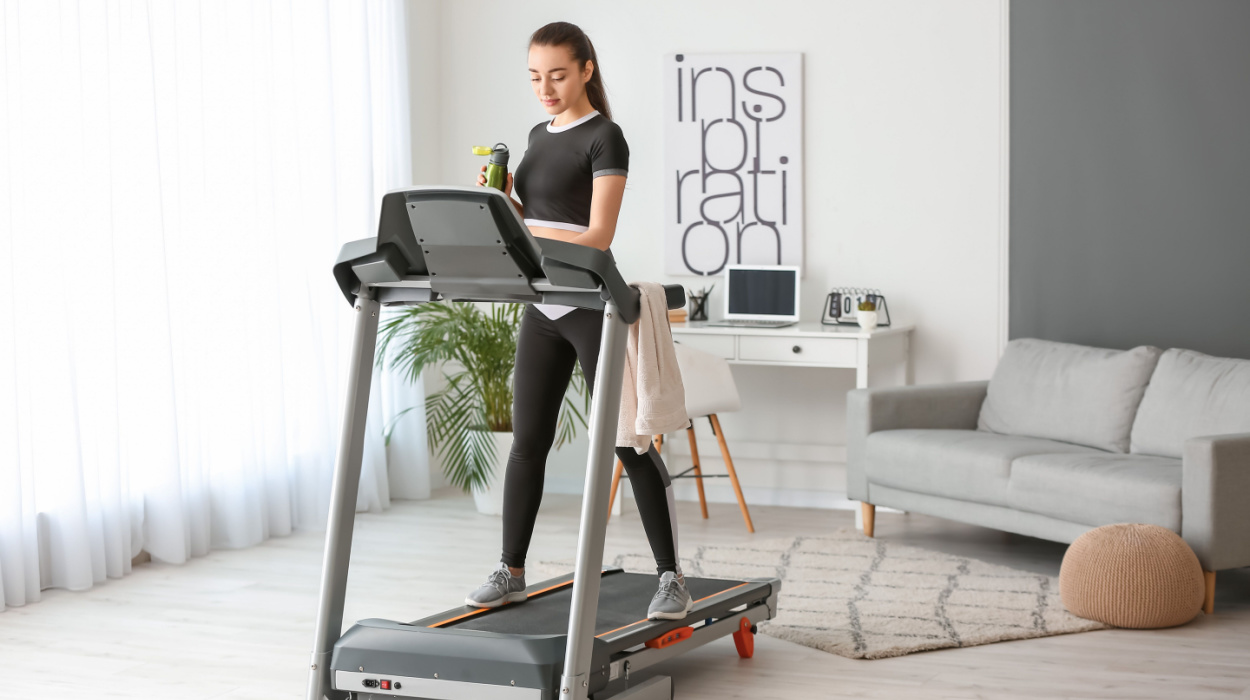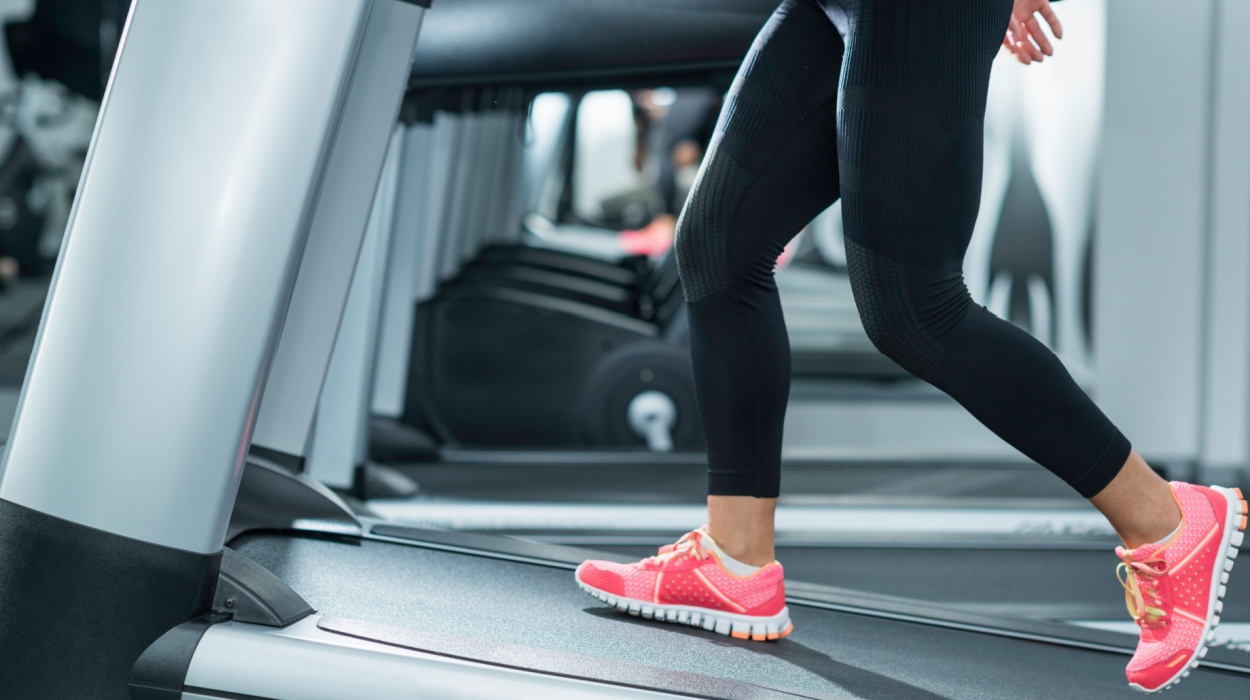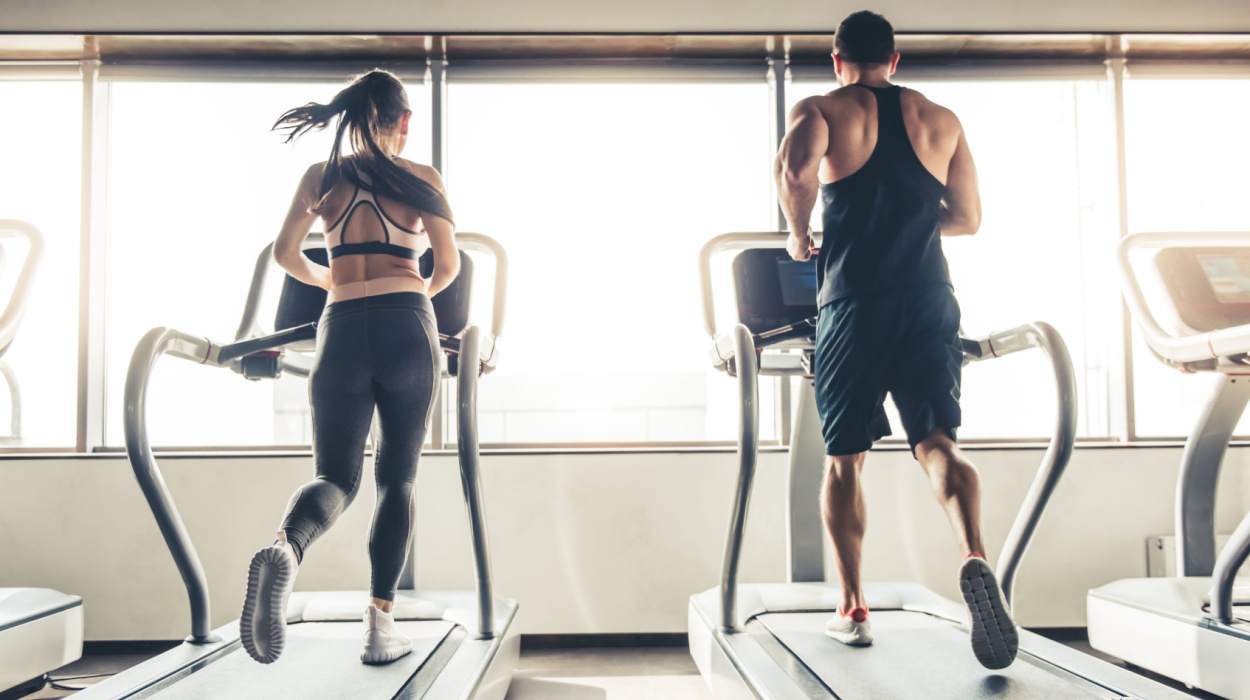There’s no way around it – weight loss takes time. That doesn’t mean it has to be challenging. In fact, it doesn’t take long to start seeing results provided you follow proven methods backed by medical science. Cardio or aerobic exercise is one of the most effective ways to lose weight, and utilizing a treadmill is one of the most effective forms of cardio.
You can do much more on a treadmill than just walk or run. Treadmill workouts are surprisingly versatile. Read on if you’re wondering how to lose weight on a treadmill in a month. Learn how to make the most of your time on the treadmill.
How To Lose Weight On A Treadmill In A Month
There are eight ways to lose weight on a treadmill in a month:
- Increase non-exercise activity thermogenesis, or NEAT.
- Use high-intensity interval training.
- Add supplements to your routine.
- Incorporate strength training exercises.
- Diet.
- Make a schedule.
- Use an incline.
- Try the 12-3-30 routine.
8 Best Ways To Lose Weight On A Treadmill In 1 Month

So just how do you lose weight on a treadmill? One way is to utilize the treadmill’s interval and incline features. More importantly, our diet, lifestyle, and routine all influence how much weight we can lose.
If you’d like to learn how to lose weight on a treadmill, read on to discover eight ways to combine nutrition, lifestyle, and workouts to help you burn more calories.
Increase Non-Exercise Activity Thermogenesis
One of the best ways to see your 1-month treadmill results involves the quality of time you spend away from the treadmill. Practicing a sedentary lifestyle can render even the most intensive workouts ineffectual. In other words, our time spent burning calories while exercising only accounts for a fraction[1] of our daily energy output.
The energy we expend while not at rest or exercising is called non-exercise activity thermogenesis, or NEAT for short. NEAT activities require less energy than exercise but go on for longer periods of time. They can include everything from cleaning the house to our time spent standing.
Use High-Intensity Interval Training
If you’re looking to lose weight fast, there’s nothing better than high-intensity interval training (HIIT). It’s a proven way[2] to increase your metabolic rate in a relatively short amount of time. Practicing HIIT workouts on a treadmill involves periodically increasing and decreasing how fast you move.
This practice also be scaled to your skill level. If you’re just starting out, walk as fast as possible for a minute or two before returning to your normal speed. Some people prefer to walk most of the time but sprint occasionally. You can also take the guesswork away by relying on the preprogrammed interval routines built into most treadmills.
Add Supplements To Your Routine
Dietary supplements work by increasing the rate at which you metabolize calories. They help to reduce appetite and inhibit fat production. Supplements can also contain many beneficial vitamins and minerals, some of which can help you lose weight. One of the most important for weight loss is magnesium[3] because it expells excess water weight without compromising the body’s electrolytes.
Incorporate Strength Training Exercises
It takes more energy to support muscle mass than it does to support body fat. The more muscle mass you can build, the greater your metabolic rate.[4] The higher your metabolism, the quicker you’ll start burning calories to reach your ideal weight. One study[4] suggests that muscle mass may even slow our food intake and therefore reduce our chances of overeating.
The treadmill is ideal for strength training exercises because it allows for resistance training using the treadmill push. To perform a treadmill push, step onto it while it is off and push away from it with your feet. You’ll find that you can use the force of your legs to move the belt enough to continue moving forward.
Diet
You increase your chances of losing weight substantially by not consuming more calories than you can expend. For example, fewer than a hundred calories are burned for every mile we walk. If you want to burn off the calories from a single meal, you may need to walk several miles! Reaching an ideal weight can be made easier by avoiding certain foods altogether.
To lose weight, it’s necessary to enter into a calorie deficit. This means burning more calories than you take in; however, this can be risky when not done properly. The U.S. Department of Health and Human Services has a weight planner[5] that allows you to find exactly how many calories you should burn to reach your ideal weight.
Make A Schedule
It’s important to create a realistic schedule when losing weight. The amount of weight you lose during any length of time will depend on how often you exercise. Even the best routine can get stale without variation. Boredom can prevent you from sticking to a consistent schedule.
By not varying your routine, you also risk plateauing,[6] which can delay your goal of reaching an ideal weight. It’s important to keep the body guessing by regularly engaging various muscle groups. This is why it’s important to integrate strength training into a treadmill routine.
Use An Incline

Using the incline feature built into most treadmills is a great way to alter the difficulty level while still getting a good workout. The extra energy you use in your legs also helps build the muscle needed to raise your metabolic rate. You can accelerate this process further by incorporating HIIT into routines with an incline.
Try The 12-3-30 Routine
One way to implement a routine is by trying the 12-3-30 strategy made popular by YouTube and TikTok influencer Lauren Giraldo. It involves setting the treadmill to a 12% incline while walking at 3 miles per hour for 30 minutes. It transforms what would otherwise be an ordinarily leisurely walk into a brisk walk with greater benefits.
Despite its popularity, there’s little scientific evidence to support that the 12-3-30 routine burns many calories. That doesn’t mean it’s useless, as moving at any speed along an incline greater than 7%[7] is a great way to raise your heart rate. Plus, this avoids putting any unnecessary strain on your body.
How Much Weight Can You Lose In A Month?
The Centers for Disease Control[8] state that, on average, a person should expect to lose 1 to 2 pounds per week. This is 4 to 8 pounds a month. Losing this much weight is easier when setting realistic goals. Try to be as specific as you can about the time spent exercising and how often you’ll do it.
Whether a person wants to lose weight on a treadmill in 2 weeks, 1 month, or a whole year, it’s better to burn calories moderately. This is because there’s a greater chance that we won’t gain it back again. After all, there’s not much point in reaching an ideal weight if you can’t maintain it.
Ultimately, how many calories a person can burn with a treadmill workout depends on several factors. In particular, it depends on the degree of their calorie deficit relative to other factors such as height, weight, and age. Even the quality of your sleep can have an impact on how many calories you’re able to burn.
How A Treadmill Aids Weight Loss
High-intensity interval workouts burn more calories[9] than exercising at a constant rate. Treadmills provide a versatile platform capable of accommodating different interval levels and inclines. Supplements make interval training more effective. The accessibility of a treadmill can also help with motivation to keep a consistent routine.
Benefits Of Treadmill Workout
There are many benefits to incorporating a treadmill workout routine. Here are some of the most significant:
- It reduces cholesterol.[10]
- It improves memory and cognition.[11]
- It can reduce anxiety.[12]
- It promotes healthier sleeping[13] habits.
- It strengthens our immune system.[14]
Conclusion
Losing a reasonable amount of weight in a month from treadmill workouts can be easy, provided you follow a few suggestions. Contributing factors like lifestyle, diet, and other forms of exercise can help you lose weight faster.
Find motivation for cardio exercise by making an attainable routine. If you need help getting started, try something like the 12-3-30 routine. It’s also important to stay active when you’re not exercising to raise your NEAT level.
Diet plays a role as well. Try keeping a food journal to keep track of your calories. There are also many safe and reliable dietary supplements available that can help in your weight loss journey.
To shed pounds properly, it’s necessary to use high-intensity intervals by varying the speed at which you walk or run. You can also combine different forms of strength training with a HIIT routine to avoid the same workout and prevent plateauing. Any HIIT treadmill workout is further expanded by moving at different incline levels.
Frequently Asked Questions
Just walking on a treadmill is not enough; however, using it as a motivator to maintain a regular exercise schedule can help with your weight loss goals when combined with a healthy diet, strength training, and high-intensity bursts.
It depends on the type of exercise. Even a moderate HIIT workout performed at an incline for 20 minutes will burn more body fat than walking for the same amount of time on an even surface.
30 minutes is enough time to start losing weight on a treadmill when combined with HIIT, NEAT, and active strength training.
Yes, particularly when using supplements that can burn fat. Also, there is evidence[15] to suggest that the trunk or middle part of our bodies is the first place to lose weight before the legs or arms.
 Evidence Based
Evidence Based
